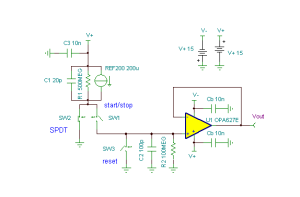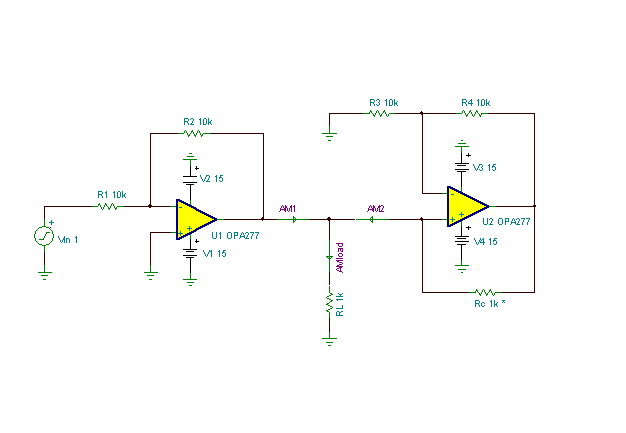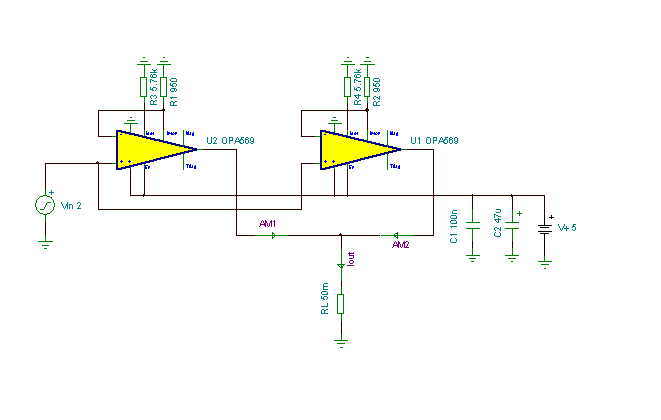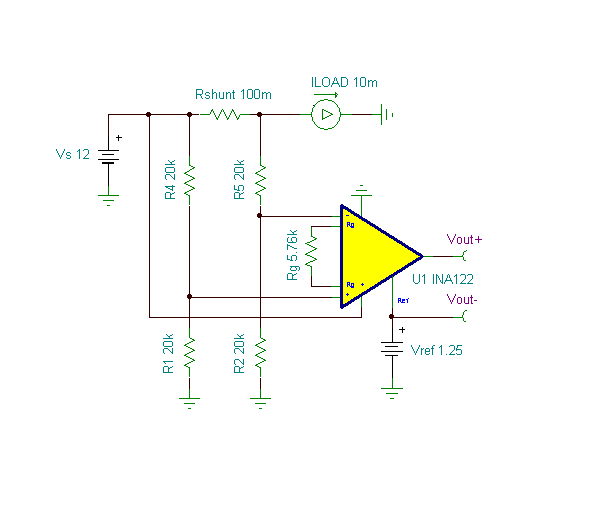Creation and Simulation of an OPA569 Laser Driver Circuit
The “OPA569 Laser Driver” circuit provides voltage- controlled constant- current biasing of a grounded- anode laser diode by using a negative supply voltage and a positive control voltage. As shown, the OPA569 op amp provides an output current of 500mA per volt input. Output is current- limited to 2A by R2. Frequency compensation is provided by C3 R3. This circuit takes advantage of the unique topology of the OPA569; it does not require a shunt resistor to measure its output current. This amplifier provides an output monitor current from pin 19 that is 1/475 th of its output current. This current is used as negative feedback to the amplifier’s inverting input (pin 5). A constant- current output is derived by this feedback.
Since no shunt resistor is required to measure output current, there is no reduction in output voltage compliance due to shunt resistor voltage drop and this circuit can swing its output voltage very close to its supply rail. This increases efficiency and reduces heat sinking requirements. In fact, supply voltage can be reduced to 3.3V for most laser diodes. The OPA569 features both a Current Limit (pin 4) and a Thermal Overtemp (pin 7) flag. These flags can be used to protect the amplifier and the Enable (pin 8) can be used to digitally control its status. (Circuit is created by Neil P. Albaugh, TI – Tucson)
OPA569 Laser Driver Circuit:
Creation and Simulation of an OPA569 Laser Driver Circuit
The great feature of the TINA circuit simulator that you can analyze this circuit immediately with TINACloud the online version of TINA.
Click here to invoke TINACloud and analyze the circuit yourself, or watch our tutorial video!
You can send this link to any TINACloud customers and they can immediatelly load it by a single click and then run using TINACloud.
Do you know that TINACloud also has an even more powerful downloadable offline version called TINA Design Suite?
TINA Design Suite is fully compatible with TINACloud and you can create, edit or run the same circuits in both systems. You can also easily exchange circuits between TINA Design Suite and TINACloud.
Download the FREE trial demo of TINA Design Suite and get
- One year free access to TINACloud (the cloud-based, multi-language, installation-free online version of TINA now running in your browser anywhere in the world.)
- An immediate 20% discount from the offline version of TINA
- Free license for your second computer, laptop etc.





